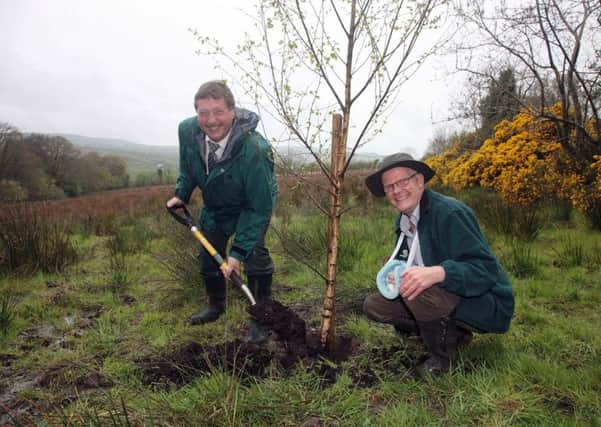Foresters purgetree plague atBurntollet wood


Forestry Minister Michelle O’Neill confirmed that following the discovery of the presence of Chalara, which causes Ash Dieback, in Burntollet, last September, remediative action was taken and that follow-up inspections will take place throughout 2016 to make sure the disease is gone.
She said: “Following a report of suspect Ash Dieback at Burntollet on regenerated and adjacent hedgerow ash in late September 2015, Forest Service Plant Health Inspection Branch undertook an inspection and samples of ash were submitted for analysis.
Advertisement
Hide AdAdvertisement
Hide Ad“The disease was confirmed to be present in ash including hedgerow ash at the site. The site at Burntollet was previously confirmed positive for the disease in planted ash trees in 2013 with the affected trees removed from the plantation under statutory notice.
“Following the confirmation of Ash Dieback infection in October 2015 regenerated ash trees at the site were removed and two adjacent hedgerow trees which were confirmed infected were also cut back and treated with herbicide.
“The plantation and surrounding area will be surveyed for Ash Dieback during the 2016 growing season. In 2015, 1893 inspections for ash dieback were undertaken by Forest Service Plant Health Inspectors.”
Ash Dieback was first recorded in Poland in the early 1990s before spreading throughout other parts of continental Europe.
Advertisement
Hide AdAdvertisement
Hide AdIt took over ten years for scientist to work out what was causing the disease.
In the early 2000s botanists isolated the Chalara fraxinea fungus from samples from Ash trees found to have been infected with Ash Dieback.
The first recorded instances of Ash Dieback in the United Kingdom and Ireland occurred in 2012.
Less than a year later the disease was first discovered at Burntollet, a newly-planted wood, established to complement and protect a number of ancient woodlands in the Killaloo and Ervey area.
Advertisement
Hide AdAdvertisement
Hide AdIt was originally believed the fungus is believed entered Great Britain on plants imported from nurseries in continental Europe.
But the presence of the disease in older Ash trees led experts to investigate the possibility it may have arrived by natural means.
These include being carried on the wind or on birds coming across the North Sea and English Channel.